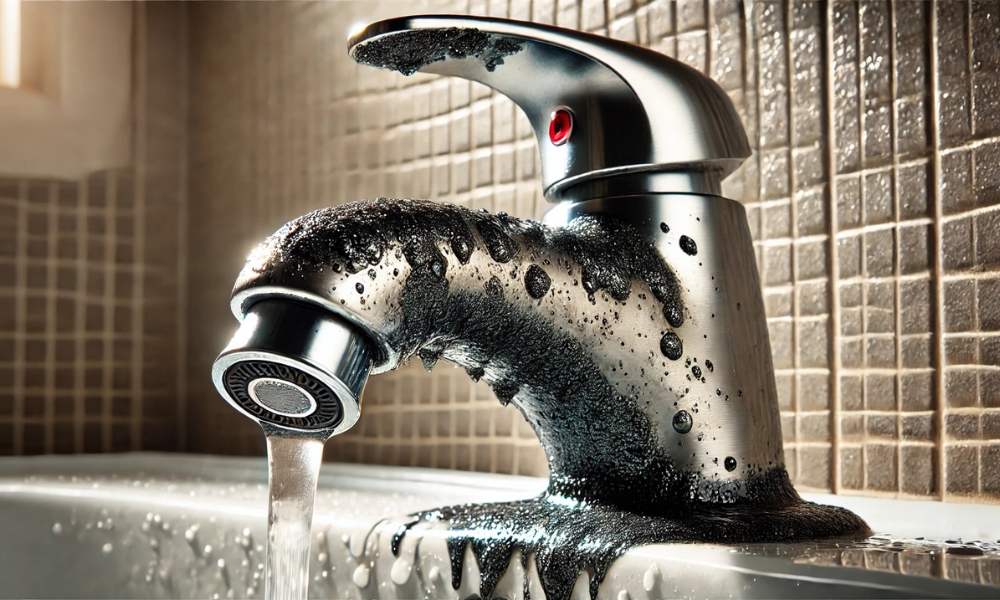Have you ever turned on your faucet, only to notice an unsightly black gunk clinging to the spout or even emerging from the water itself? This mysterious, dark residue often appears in kitchens and bathrooms, raising questions and concerns for homeowners. Not only is it visually unappealing, but it also prompts worry about potential health risks. Whether you’ve noticed a slight discoloration around the faucet or a slimy buildup, understanding what causes this gunk and how to address it is essential for maintaining a clean and healthy home. Here, we delve into the nature of this unwelcome residue, its origins, health implications, and the best ways to prevent it from becoming a recurring issue.
1. Identifying The Black Gunk
The black gunk often appears as a slimy or gritty substance, clinging to the faucet’s aerator or spout. Sometimes, it can even look like small flecks suspended in the water. While the specific appearance may vary, the material usually has a dark, almost greasy texture, making it particularly stubborn to remove. In some cases, it may carry a musty or metallic odor, a signal that it’s more than just dirt and grime. Identifying the exact characteristics of the gunk can provide clues to its composition and underlying causes, leading to a more targeted approach for removal and prevention.
2. Common Causes Of Black Gunk
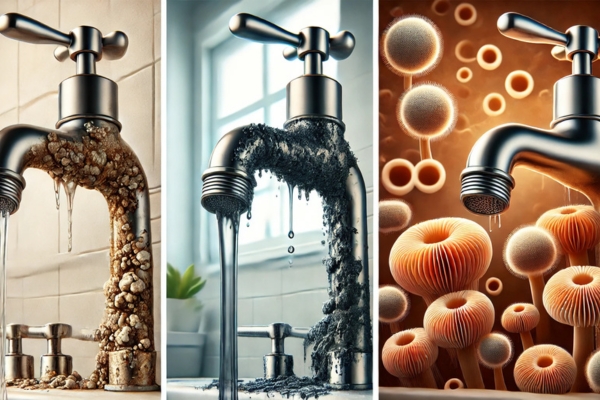
Several factors contribute to the formation of black gunk in faucets, with some more prevalent depending on the home’s location and water source.
- Mineral Deposits: When water contains high levels of iron or manganese, these minerals can accumulate over time, especially on faucet aerators. As the minerals oxidize, they darken, creating a visible blacks or brownish film.
- Mold and Mildew Growth: Faucets, particularly those in humid environments, provide an ideal breeding ground for mold and mildew. The constant exposure to moisture fosters the growth of these fungi, which can lead to a blacks, slimy buildup.
- Bacterial Biofilm: A biofilm is a thin layer of bacteria that adheres to surfaces, thriving in damp, nutrient-rich areas. When bacteria colonize the inside of a faucet, they can form a sticky, blackish residue. This bacterial buildup often happens in homes with older plumbing systems, where sediment and organic matter can accumulate.
Each of these causes can result in the formation of black gunks, and understanding which one is to blame can help in selecting the most effective cleaning and prevention techniques.
3. Role Of Water Quality
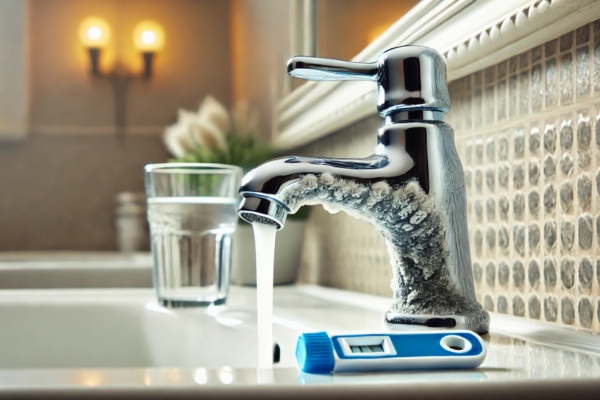
The quality of your water plays a significant role in the development of black gunk. Hard water, which contains a high concentration of minerals like calcium, iron, and magnesium, can leave behind deposits that accumulate and darken over time. Municipal water sources treated with chlorine can also affect faucet buildup, as chlorine interacts with organic matter and minerals, leading to residue formation. In rural areas, well water may carry additional organic material that supports bacterial growth in faucets. Regular water testing can provide insight into what contaminants or mineral levels are present, making it easier to choose filtration solutions that can reduce or eliminate the black gunks.
4. Signs Of Black Gunks In Your Faucet
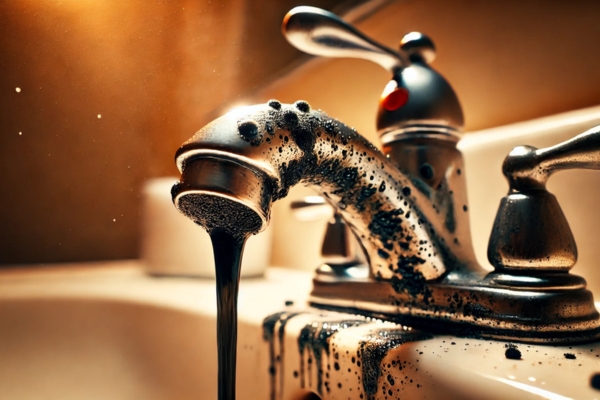
The presence of black gunk is often unmistakable, but some subtle signs can indicate its development even before it becomes visibly noticeable:
- Discoloration: If the area around your faucet spout or aerator appears darkened or stained, it’s likely that blacks gunks are forming. This is especially common in faucets that haven’t been cleaned or maintained in a while.
- Unpleasant Odors: A musty or metallic smell coming from the faucet, particularly when the water is running, is often a sign of bacterial or mineral buildup. This odor can signal that the gunk is more than just a surface issue.
- Changes in Water Quality: If you notice small black flecks or specks in your water, the black gunks may have detached and are now circulating through your water system. This could mean the buildup is inside the faucet itself or even further back in the plumbing.
5. Health Risks Associated With Black Gunks
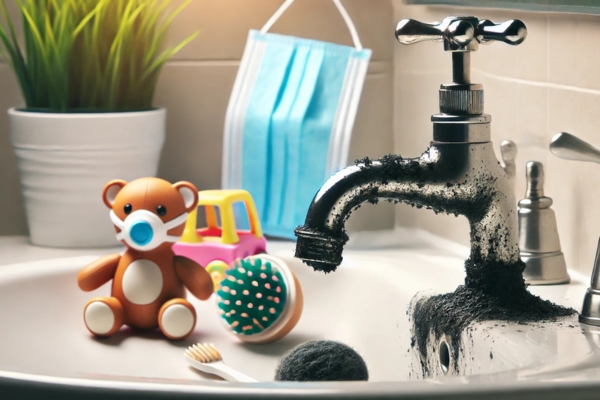
While the black gunk may seem harmless, it can pose health risks, especially for vulnerable individuals such as children, the elderly, and those with compromised immune systems. Bacteria in biofilms can harbor harmful pathogens, potentially leading to respiratory issues or skin irritation upon contact. Mold and mildew are also known to cause allergic reactions, including sneezing, coughing, and eye irritation. Additionally, exposure to high levels of certain minerals, like manganese, can have negative health effects over time. Thus, it’s important not only to remove the black gunks but also to understand its potential health implications.
6. Preventive Measures
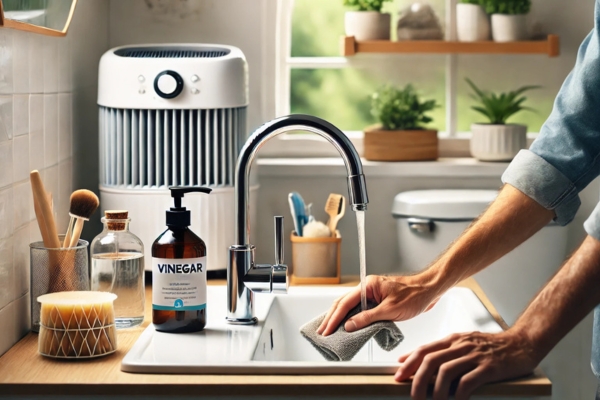
Prevention is key to ensuring that black gunk doesn’t become a recurring nuisance. Implementing the following practices can help:
- Regular Cleaning: Routinely cleaning your faucets with a mild vinegar solution can help break down mineral deposits and inhibit mold growth. For a more thorough clean, disassemble the faucet aerator and soak it in vinegar to dissolve any buildup.
- Water Filtration: Installing a water filter can reduce the mineral content, particularly iron and manganese, which contribute to gunk formation. Whole-house filtration systems or individual faucet filters can both be effective options.
- Ventilation: Improving airflow in areas like bathrooms can reduce humidity, minimizing mold and mildew growth around faucets. A dehumidifier or bathroom fan can help maintain a drier environment.
7. How To Clean The Black Gunks
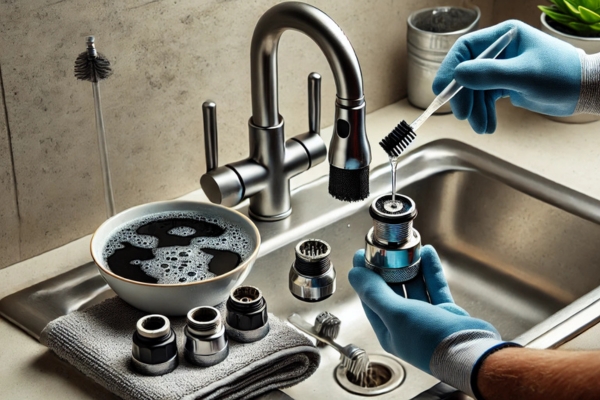
Removing black gunks requires a methodical approach. Start by turning off the water supply and disassembling the faucet aerator. Soak the aerator parts in a solution of vinegar and baking soda, which will help to dissolve minerals and kill bacteria. For stubborn buildup, a soft brush or toothbrush can be used to scrub the interior components. After reassembling, flush the faucet with hot water to ensure any remaining residue is washed away. Regularly following this cleaning routine can keep your faucet clear of future black gunks.
8. When To Call A Professional
In cases where the black gunks return quickly after cleaning or appear deep within the plumbing system, it may be necessary to consult a professional plumber. Persistent buildup could indicate underlying issues with water quality or plumbing materials, such as corroded pipes that require repair or replacement. A plumber can conduct a thorough inspection, recommend solutions like pipe replacement or water treatment, and help you address the root cause to prevent future problems.
9. How To Clean Matte Black Faucet
Cleaning a matte black faucet requires a gentle approach to maintain its sleek, modern finish. Begin by wiping the faucet with a soft, damp cloth to remove surface dust and grime. Avoid using harsh chemicals or abrasive sponges, as these can damage the matte finish. For stubborn spots, mix a mild dish soap with warm water, dip a soft microfiber cloth into the solution, and gently wipe the faucet. Rinse with a clean, damp cloth and dry thoroughly with a soft towel to prevent water spots. Regular maintenance will keep your matte black faucet looking fresh and free from build-up.
Final Tips
Dealing with black gunk in your faucet may seem like a small inconvenience, but it can reveal important information about your home’s water quality and plumbing health. By understanding the causes and taking preventive steps, you can keep your faucets clean and safeguard your home against potential health risks, Regular maintenance, such as routine cleaning and water testing, will ensure that the black gunks remain a thing of the past, allowing you to enjoy clean, clear water with peace of mind.
